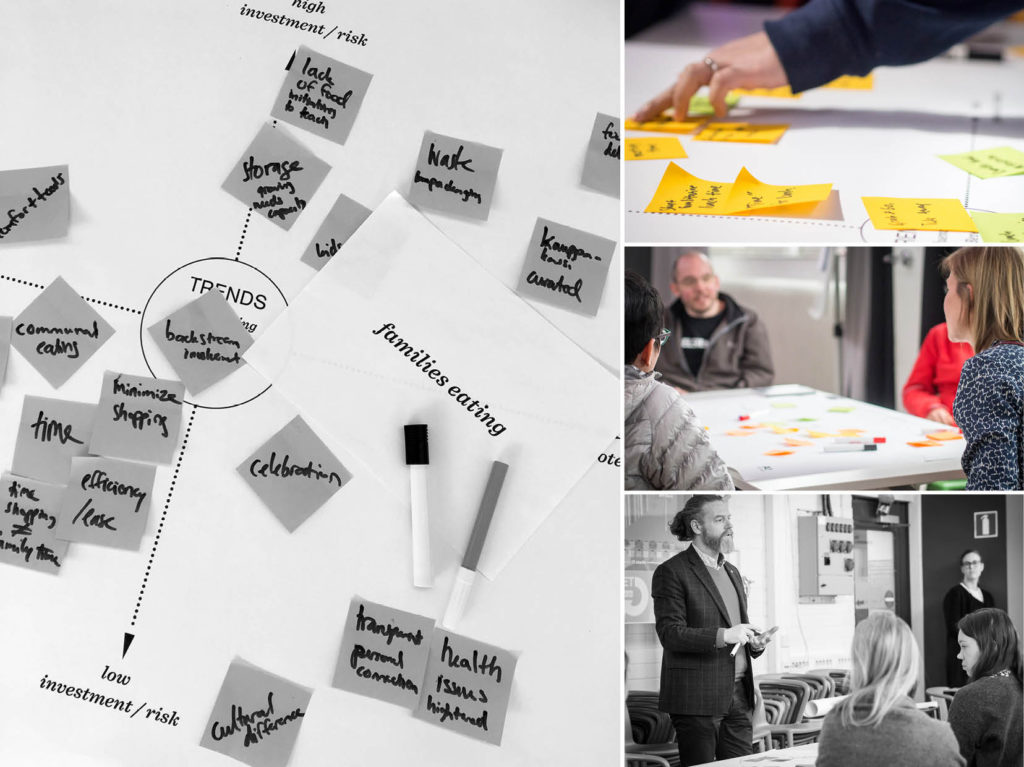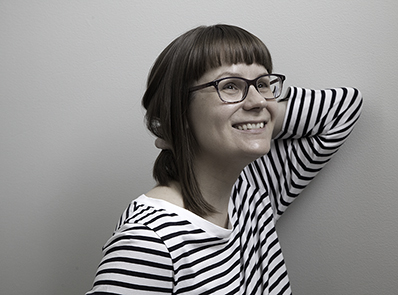Anyone can be a trend forecaster! Read on for some bite size insights from our Design+Community event on what’s up and coming in the realm of food, and learn the first steps for doing your own forecasting.
I heartily stand by this statement from my keynote ‘Introduction to Trend Forecasting’ in the Design + Community event on Friday, May 3rd. Our open day event at the Design Factory also featured entrepreneurs Perttu Karjalainen from Entocube and Benoit Mantel from Helsieni, both companies considered as pioneers in the food industry compared to the business models and product offering of the household names in the industry.
But how to take the forerunner role? What kind of tools are there if you want your own business idea to be the cutting edge solution everybody hungers for tomorrow? Voilà, here is where foresight thinking takes place! Residing in the interdisciplinary ground between business design, user research and service design, the aim of foresight thinking is not just to create a justifiable interpretation of the future, but to actively prepare for it. The general purpose is to gain understanding of the target markets, develop a strategic approach to achieve the desired goals, and minimize risks on the way – and to use the insight as a tool to build a joined outlook among stakeholders.
All good trend forecasts take in account two aspects: first, how are things now? What are the current target group’s behavior and preferences? Second, in what direction things are likely shifting in the future? In the big picture, all forecasting is based on recognizing the forces behind changes;
- The megatrends affecting in wide geographical and demographical scale during a long time span, making the movement anticipated – such as e.g. urbanization);
- The trends, directions of change, having consequential impact to the culture, social or business sector through which they move – such as e.g. the rise of microbreweries in the Finnish beverage market

However, the vital aspect to monitor are the weak signals. They are indications of change – emerging ideas, phenomena, trends – which will affect a company or its operational environment. They can be can be considered warning signs of an upcoming change that has a small probability in coming true, but if realized, they have a large potential influence. The tricky thing is that since weak signals are only just emerging, having no recognizable past, it is often difficult to spot them in time. A relevant weak signal might be Solar Foods, a Finnish startup with a cutting edge technology of generating edible protein from carbon dioxide & hydrogen. Feels like science fiction today, but possibly a part of mainstream diet in ten years?
In order to forecast you need to stay tuned with the creators of weak signals, right in the beginning when an upcoming trend is just bubbling under. These influencers are called trendsetters. They can be either people, phenomena, products or companies which have the ability to create and introduce signals. In other words, they are forerunners and innovators who set the course for the mainstream to follow. The key element is to keep an eye on not only your own field of business and your peers, but to observe what is kind of things are happening in the world on a broad scale.
Back to the event and my original statement: really, anyone can be a trend forecaster! Following my introduction, we set out to demonstrate this in a workshop on ‘Mapping out trends in food & beverages market’. Dividing in small groups and assigned with designated topics, object of the exercise was to reveal silent knowledge, sketch out interlinked signals and trends, and to generate discussion on the phenomena and outlook of the industry.

Here are some of the insights to digest, courtesy of the wonderful participants of the event:
Work day lunch:
*Conscious approach gaining ground: demand of quality, taste and healthy choices, ‘brainfood’ becoming a new mainstream concept
*Rising interest in sharing the food and DYI lunch culture
On the go:
*Users are not willing to compromise on the food quality or on their dietary choices (gluten free, vegan etc.)
*Overall consciousness is expected, emphasis on holistic wellbeing & sustainability
Snacking:
*Users struggle with strong underlying motivation between pleasure vs. quilt, and enjoyable vs. time consuming aspects
*Market potential detected in products based on seasonal offering
Family eating:
*Conflicting interests between communal aspect of spending time with your loved ones vs. saving time in the hectic family life
*Sustainability playing an increasing role in consumer goods choices, e.g. reducing packaging is considered important

Anna is a designer and researcher in Design Factory’s DesignBites research project. With a background in product development and brand building, she combines perspectives from user research, trend forecasting, concept design to translate information into tangible insights and communication tools.
 Aalto DF
Aalto DF